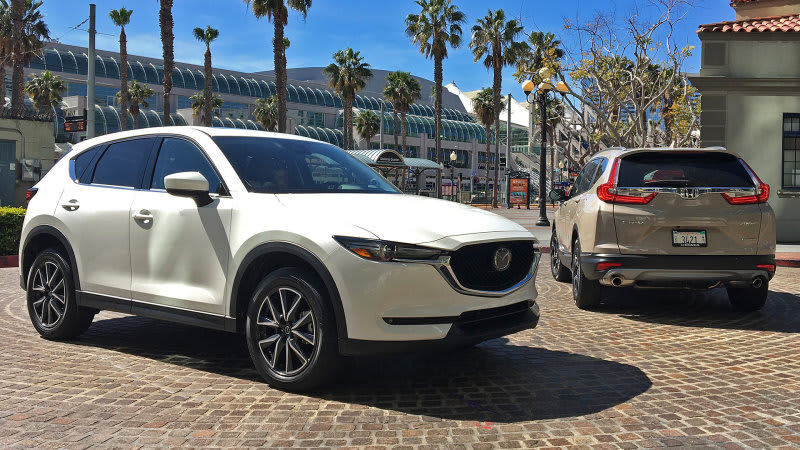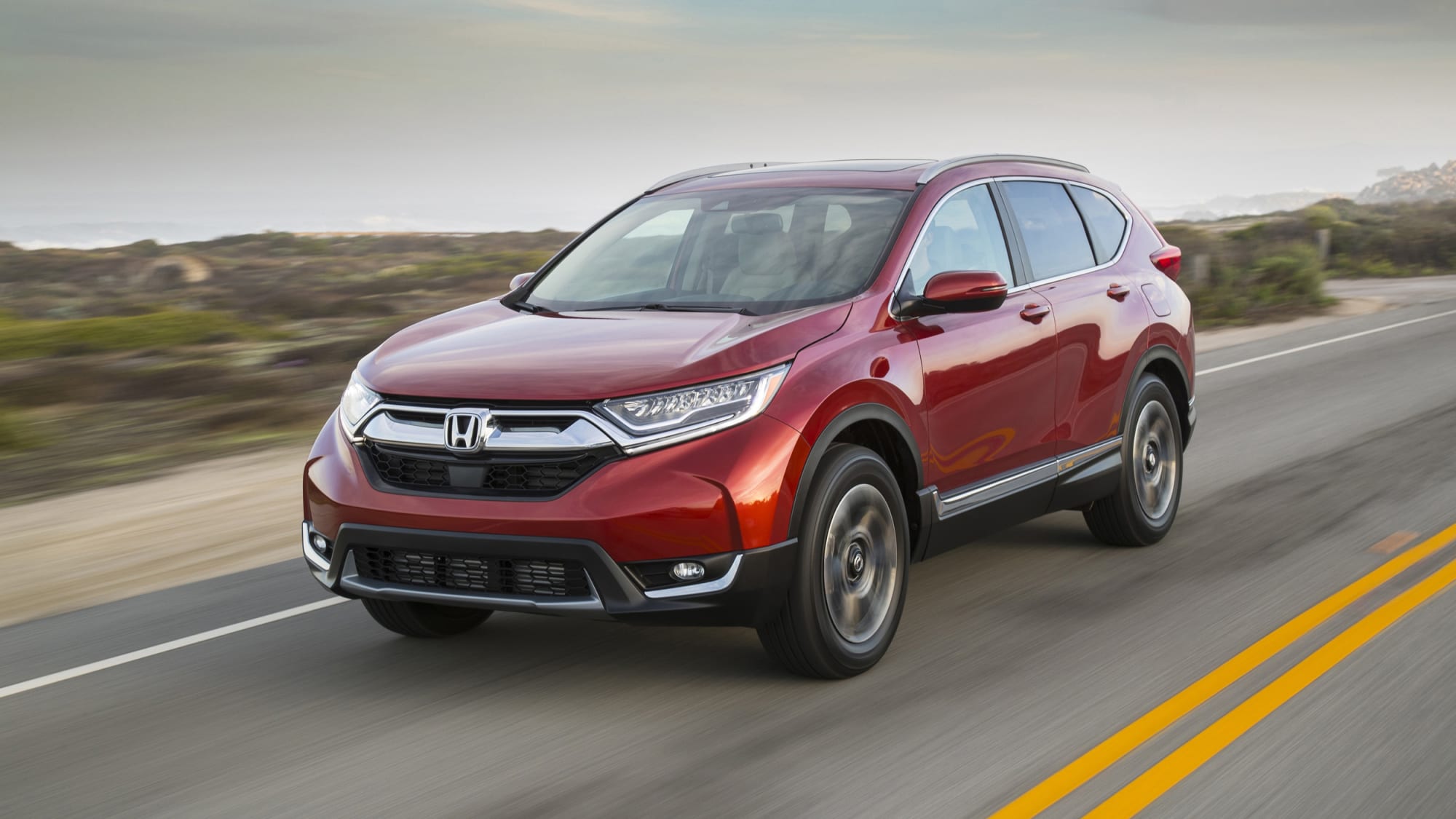If you’re looking for a small crossover, and especially if you’ll have a family in tow, the 2020 Honda CR-V should be considered a must-drive. Though not especially characterful and certainly not the most rugged sort, the CR-V nevertheless impresses by being impeccably well-rounded. Name a practical attribute, and it almost certainly does it as well or better than its competitors. Space, fuel economy, performance, safety, quality and value are all prime reasons to consider it, while one can’t ignore Honda’s sterling reputation for reliability. For 2020, the CR-V also gains a new hybrid powertrain, with a mix of fuel economy and performance that could make it the smartest pick of an already smart bunch.
What’s new with CR-V for 2020?
The CR-V gets its first major update since being completely redesigned for 2017. The base LX trim level now comes standard with the 1.5-liter turbo engine previously standard on every other trim – the previous base 2.4-liter is no more. Other powertrain news comes from the new 2020 Honda CR-V Hybrid, which will arrive later in the model year.
The base LX also now receives standard accident avoidance tech, while on the opposite end of the trim level spectrum, the Touring gains a heated steering wheel and wireless smartphone charging. Every CR-V also gets revised styling, including a blacked out grille and dark-tinted taillights. Inside, the center console has been redesigned to offer even more flexible storage.
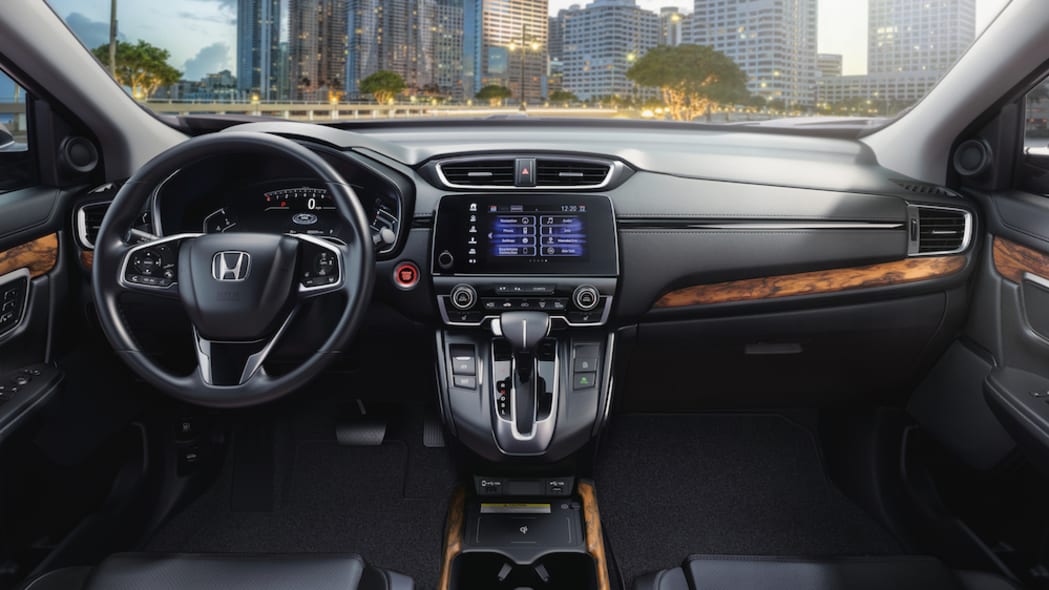
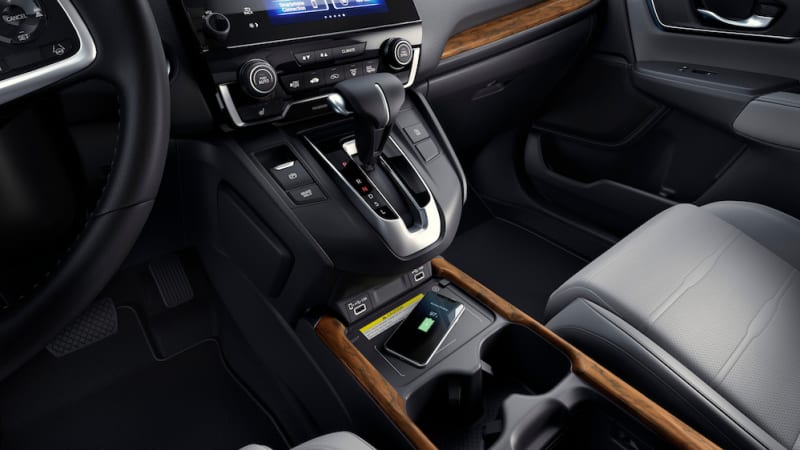
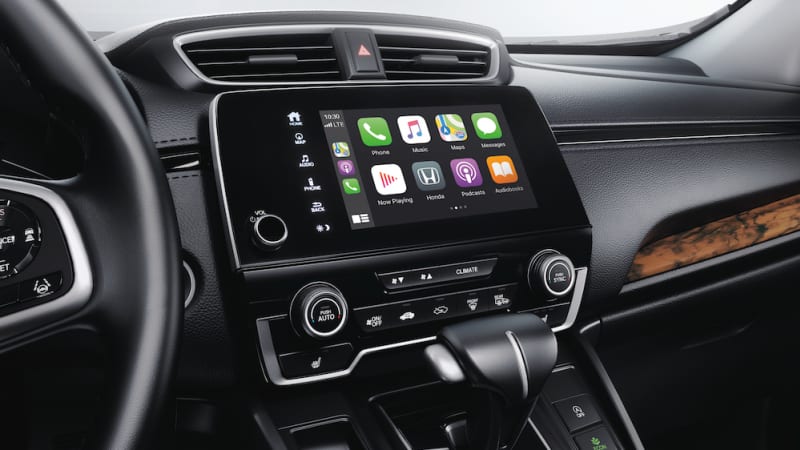
What’s the CR-V’s interior and in-car technology like?
The CR-V provides a tasteful, if a tad dull, design aesthetic backed up with above-average materials and build construction for this segment. If you’re a previous CR-V owner, you’ll note that this most recent version features a higher-quality and more premium environment than past models. If you aren’t, you’ll still find it to have one of the nicest cabins in terms of quality, and also one of the most functional, as it boasts a number of clever storage solutions in the center console.
In the EX trim, the CR-V comes standard with an abundance of tech for a reasonable price that makes the base LX trim a bit of a moot point. You get three USB ports, Apple CarPlay, Android Auto, a variety of other smartphone integration apps and a six-speaker sound system. Controlling them is a seven-inch touchscreen, which isn’t the CR-V’s strongest element due to iffy responses, lack of physical menu buttons, and an occasionally confusing menu structure. Honda’s newer interface found in the Odyssey and Accord corrects these issues. Rival systems, particularly the Subaru Forester’s, offer comparable features with a more user-friendly interface.




How big is the CR-V?
The 2020 CR-V is one of the larger “compact SUVs,” at least on the inside, as Honda typically does a better job than most of maximizing every bit of interior space possible. Although its overall exterior length and width are average for the segment, its passenger and cargo space are better than nearly every competitor. The 60/40-split reclining back seat provides genuine space and comfort for even large adults, while a rear-facing car seat should be able to fit in the middle position — even with taller passengers up front. Honda also provides LATCH anchors in all three seating positions. Headroom is abundant regardless of the seating position or the presence of the available sunroof.
Behind that back seat is a large and versatile cargo area (37.6 to 39.2 cubic feet) with one of the lowest, most easily loaded cargo floors in the segment. That’s good news if you’ll be lifting a big, heavy stroller, or the dog needs to jump aboard. Folding the back seat down using the two remote pulls in the cargo area reveals 75.8 cubic feet of maximum capacity. That’s better than most midsize SUVs like the Ford Edge and better than nearly all its fellow compact SUVs. Only Subaru Foresters without a sunroof are a smidgen bigger.
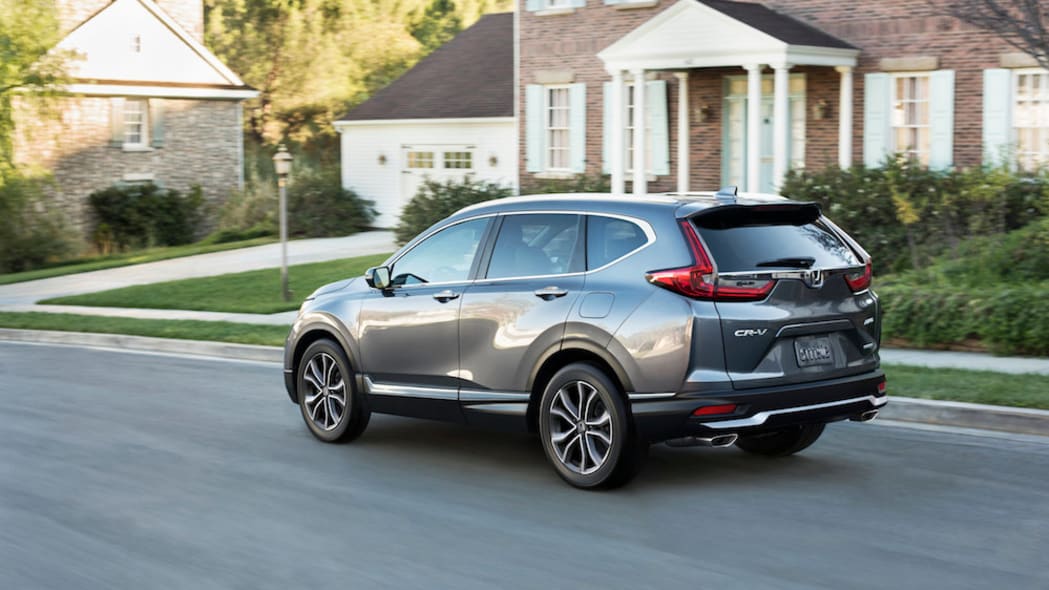
What’s the CR-V’s performance and fuel economy?
Every 2020 Honda CR-V comes standard with a 1.5-liter turbocharged inline-four that produces 190 horsepower and 179 pound-feet of torque. It’s paired with a continuously variable transmission and standard front-wheel drive, but all-wheel drive is optional. Acceleration and fuel economy are among the best in the segment. EPA estimates are 28 mpg city, 34 mpg highway and 30 mpg combined with FWD, and 27 mpg city, 32 mpg highway and 29 mpg combined with AWD.
The new CR-V Hybrid will come with the same excellent gasoline-electric powertrain found in the Honda Accord Hybrid. It consists of two electric motors and a 2.0-liter inline-four that together produce 212 horsepower, making the Hybrid the most-powerful CR-V. EPA fuel economy estimates were not available at the time of this writing, but Honda said to anticipate a 50% improvement over the regular CR-V city estimate. That would mean 42 mpg, which is comparable to the RAV4 Hybrid.
What’s the CR-V like to drive?
Today’s CR-V drives with greater refinement and sophistication than past versions. It’s more comfortable, there’s less wind and road noise, and the turbo engine’s low-end power results in quieter, less strained noises when driven around town. These observations largely apply in relation to most competitors as well, and indeed, the CR-V is one of the best compact crossovers to drive.
In general, that’s because the CR-V is well-rounded. Its steering is nicely weighted and imparts sufficient confidence, but doesn’t make parking a chore. Its handling certainly isn’t the most responsive or road hugging in the segment, but it inspires confidence while not taking away from the comfortable ride. As for the engine, that low-end power from the turbocharged engine makes the CR-V feel like a strong performer at more mundane, around-town speeds. Open it up and it starts to run out of steam, and you’ll notice some droning from the CVT.
Meanwhile, if the new CR-V Hybrid drives anything like the Accord Hybrid, it could easily become the CR-V of choice.
What more can I read about the Honda CR-V?
2020 Honda CR-V Hybrid introduced for the United States
We highlight all the changes for the 2020 CR-V, including the new Hybrid.
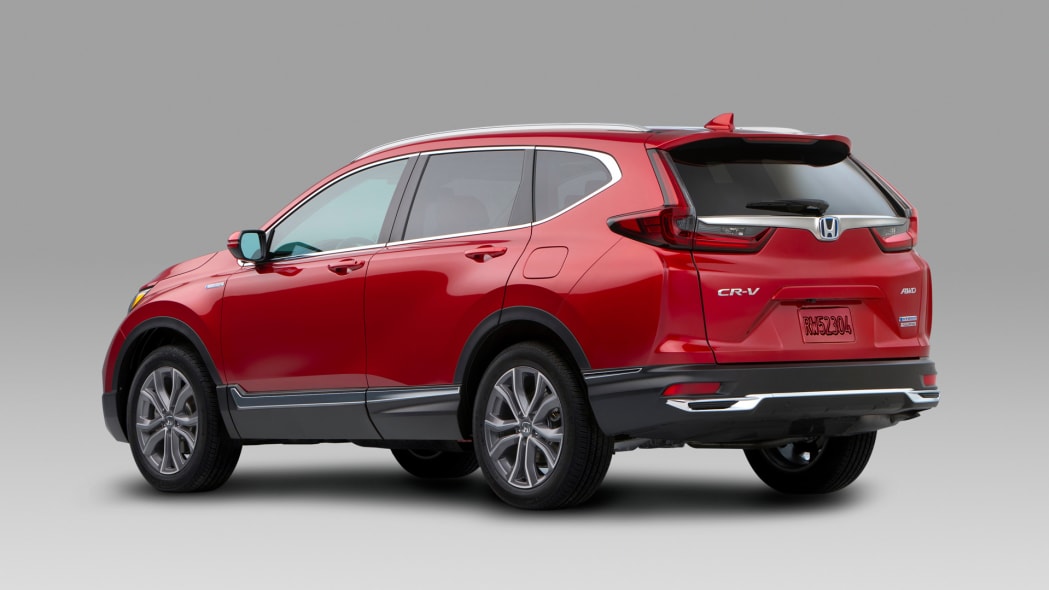
Honda CR-V vs Mazda CX-5 Comparison | A tough choice
Driving the CR-V and Mazda CX-5 back-to-back, comparing their driving experiences, interiors and specs.
Honda CR-V First Drive Review | A bestseller that’s better than ever
Our first drive of the current Honda CR-V generation, including more in-depth information about its design and engineering. Though updated for 2020, our impressions remain broadly the same.
What features are available and what’s the CR-V’s price?
Pricing for the 2020 Honda CR-V starts at $26,145, including the $1,095 destination charge, for the two-wheel-drive LX base model. All-wheel drive is a $1,500 option on every trim.
Base feature content got a significant boost for 2020 due to accident avoidance tech becoming standard across the board (see Safety section below), and the base LX is well-equipped with the basics. That said, for a relatively small premium of $2,510, the EX trim adds a wealth of worthwhile equipment: automatic headlights, fog lights, proximity entry and push-button start, rear tinted glass, a sunroof, a cargo cover, dual-zone automatic climate control, an eight-way power driver seat, heated front seats, two rear USB ports, a six-speaker sound system and a 7-inch touchscreen that includes Apple CarPlay and Android Auto. (The base infotainment system is pretty much a radio faceplate with a large display.)
For a full breakdown of each trim level’s feature content, specs and local pricing, see our 2020 CR-V page here on Autoblog.
LX: $26,145
EX: $28,655
EX-L: $31,145
Touring: $34,345
What are its safety equipment and crash ratings?
Every 2020 CR-V comes standard with the “Honda Sensing” suite of accident avoidance tech that includes forward collision warning, automatic emergency braking, lane-keeping assist, blind-spot and rear cross-traffic warning, and a driver inattention monitor. Adaptive cruise control is also included, and is actually a superior system to the one found in Honda’s Passport and Pilot.
The CR-V received the best-possible five-star crash rating from the government for overall, frontal and side crash protection. The Insurance Institute for Highway Safety named it a Top Safety Pick for its best-possible scores for crash protection and prevention. Its headlights were given scores different scores depending on trim level. The Touring’s LED lights got an Acceptable score, while the EX and EX-L got a Marginal.

